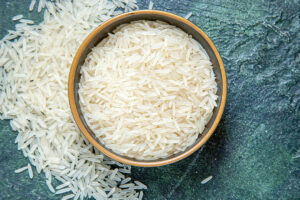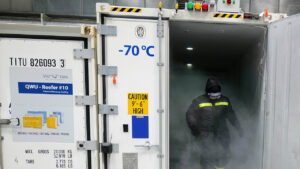Filling rice bowls

The Marcos II Administration wants the country to achieve rice self-sufficiency in four years. It aims that by 2027 the Philippines can produce all its rice needs without having to import from abroad. A laudable target. But rice self-sufficiency has been a government objective for more than 60 years now. It has been a moving target, obviously.
It remains uncertain whether the four-year timeline is driven by science or politics. For sure, the Administration will want to achieve the target within its term, which ends in 2028. But while the objective deserves support, one cannot help but be skeptical. Most governments since the post-war era had targeted food self-sufficiency. It was never achieved consistently in the long-term.
There have been some good years, but overall, our total food import bill continues to grow. Obviously, there are more mouths to feed now given the ever-growing population. And farmlands have not expanded, being a finite resource. The weather, meantime, has been less predictable due to climate change. And irrigation remains a challenge because of limited water production.
Controlling rice production and ensuring 100% adequacy for domestic needs is highly dependent on one’s ability to control the weather and other variables. This, of course, is impossible. Moreover, while self-sufficiency can be achieved in a particular harvest year — with good weather — the challenge is to ensure consistency in production over the long term.
What is more concerning is the point of view of some sectors that rice production and liberalized importation cannot go hand in hand. Their call is for the repeal of the Rice Liberalization Law, and the return of government controls over rice imports. This, I believe, will actually be a step back. After all, if domestic supply is sufficient, and affordable, then importation will be unnecessary.
Rice self-sufficiency is not the objective but simply one of the means to attaining food self-sufficiency. The challenge is how to feed the growing population and ensure food security. Food security ensures national security as it promotes political and social stability. As long as people, including the poor, get to eat properly, then the development battle is half won.
In this line, importation should be an option, precisely as a way to fill the gap between local supply and demand. Of course, importation is not always easy. During hard times, there won’t be much to import either. And, importation relies heavily on the country’s capacity and ability to pay the import bill, as well as the willingness of foreign suppliers to sell to us.
Food importation is a stop-gap measure, not a long-term solution, to ensuring food security. Although, a policy that relies heavily on free trade in food remains highly susceptible to risks: foreign exchange supply and rate fluctuations; trade disputes; regime changes; and supply disruptions caused by adverse weather conditions or war, famine, or plague, among others.
We cannot always expect the rest of the world to have food to sell to us. In times of bad weather, war, famine, or even trade disputes, global food can be in short supply. We should be able to fend for ourselves. But how can we do that if we continue to lose farms and farmers to “progress” and “development”? Technology can do only so much in improving farm productivity and efficiency. Food production will always need farmlands and farmers. We need long-term solutions to ensure food security.
Data indicates that since the late 1960s, farm yields have actually increased substantially because of the cultivation of high-yielding rice varieties, with average productivity reportedly increasing from 1.23 metric tons per hectare in 1961 to 3.59 metric tons per hectare in 2009. The area under irrigation also grew from under 500,000 hectares in the mid-1960s to about 1.5 million hectares in 2009.
But self-sufficiency, particularly in rice production, is no longer likely, given the rate we have been losing land to development, seemingly stagnating yields, and given that farmers are now a dying breed. Data from the Philippine Statistics Authority (PSA) indicate that in second quarter 2018, the harvested area for rice fell to 939,790 hectares, from 947,190 million hectares in the quarter in 2017. Yields have also reportedly remained flat in the second quarter at 4.38 tons per hectare.
A more important factor, to me, is that the population is over 100 million people now, and it seems that consumption growth has been outpacing harvest growth, resulting in a supply gap. This is where importation plays a more crucial role, and the right timing of importation and distribution is key to ensure supply and price stability.
But, considering the rate of development, and the rate of population growth, it is not likely for the trend of supply gaps to disappear or to reverse any time soon. I believe it will remain with us for years to come and may in fact worsen in the future. In 1960, there were only 27 million of us. Today, we are more than 100 million. The rate of population growth from the 1960s to the 1980s was about one million per year, but since the 1990s it has been about 1.6 million annually.
And while in 2013-2017, according to the National Food Authority, rice production averaged 12.019 million metric tons (MT) annually, consumption averaged at a higher rate of 12.850 million MT. The resulting supply gap made it necessary for us to import rice during the period. In 2022, palay (unmilled rice) production was at 19.76 million MT. It was at a record high of 19.96 million MT in 2021.
In 2022, demand forced us to import a record high 3.8 million MT of rice, mostly from Vietnam. In 2021, despite the record harvest, we still imported 2.7 million MT of rice. The PSA also reported that in 2021, rice self-sufficiency was down to 81.5%, from 85% in 2020. This year, the import forecast is for another 3.8 million MT of imported rice to cover an expected production shortfall. And this shows, simply, that despite the best harvest, importation is still necessary.
We need not abandon rice self-sufficiency, as long as we make the effort to improve and modernize rice farming. But we cannot shun importation just yet, and perhaps even after we achieve self-sufficiency. To do so, the average annual agricultural sector growth of 1.1% should be significantly higher than average population growth of 1.8%. Otherwise, agriculture will always have to play catch up just to meet the food needs of a growing population.
Weather is the most unpredictable factor in all this, and adverse weather affects not only local harvest but global supply and prices as well. Loss of land to development, with farms lands becoming cities and residences and commercial areas, also significantly affect supply. This is especially true if productivity or yields do not go up. And then, there is the declining number of farmers and farming communities. It is a complex problem that cannot be solved by Agriculture alone.
Marvin Tort is a former managing editor of BusinessWorld, and a former chairman of the Philippine Press Council




